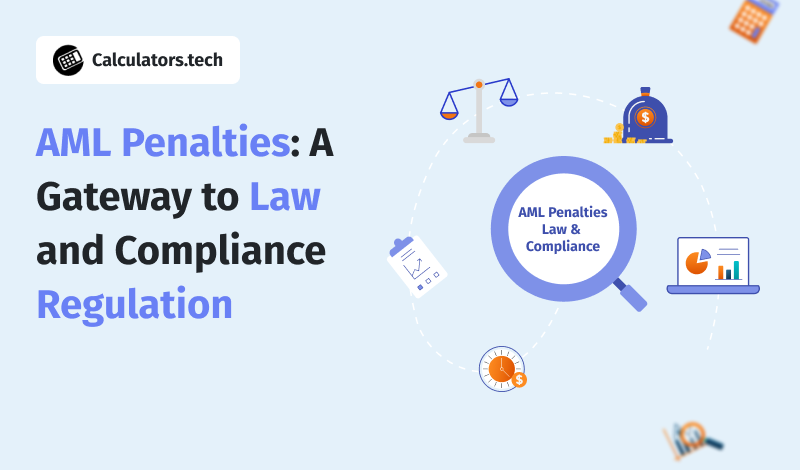Anti-Money Laundering (AML) penalties are crucial in enforcing compliance and protecting financial systems from illicit activities. The need for AML measures has eventually grown as regulatory scrutiny intensifies globally. This is reflected in the expansion of the global anti-money laundering software market, which saw a rise from $690 million in 2016 to $868 million in 2017. By 2023, this market is projected to reach $1.77 billion which shows the rising demand for effective AML solutions. Understanding the enforcement of AML penalties and ensuring compliance is vital for businesses to avoid hefty fines and maintain regulatory adherence.
Why are ML/TF Risks in Constant Flux?
The concept of “Progress or Regress” holds a massive value in financial crime compliance. As the world adapts to new advanced technologies such as cryptocurrencies, blockchain, and artificial intelligence, the chances and avenues of criminal activities are continuously increasing. About 30 years ago, the time spent sending money to another location was longer than in the recent era. Due to technological advancements and the presence of digital applications in the market, potential imposters are adapting sophisticated tactics to launder money and utilizing them for illegalities. Criminals, often viewed as "innovators," continually devise new methods to exploit these systems.
To combat these fraudulent activities, financial institutions and related high-risk sectors such as casinos and real estate industries integrate AML compliance to enhance the system's integrity. AML penalties are introduced for organizations that are not serious about taking money laundering actions or contributing to intensifying these illegalities.
Prospective AML Financial Penalties
In 2011, the UNODC estimated that between 2% and 5% of global GDP was laundered annually, amounting to a staggering $320 billion to $800 billion.
Fast forward to 2022, and the global GDP has significantly increased to USD 101 trillion. Applying the same percentage range, it finds that illicit financial flows have grown from an estimated USD 2.02 trillion to USD 5.05 trillion. This represents a sixfold increase from 2011.
The substantial growth in illicit financial flows has heightened the urgency for regulators to impose AML fines and sanctions on entities that violate anti-money laundering regulations. These measures aim to deter illegal activities and secure the financial system's integrity.
Significant AML Penalties Before 2023
Some of the significant AML fines penalties faced by some of the bodies are given below in detail:
HSBC AML fine
In 2012, HSBC Bank encountered a $1.9 billion fine for not meeting the anti-money laundering (AML) regulations and US sanctions. The bank was aware that its client portfolio included entities involved in illicit activities such as drug trafficking and state-sponsored terrorism. Despite this knowledge, HSBC deliberately flouted US sanctions which enabled these entities to move funds through its financial network.
The HSBC case revealed a risk/reward calculus where the potential benefits of non-compliance exceed the perceived costs. Despite the deliberate flouting of US sanctions, no individuals were held personally responsible for the bank's actions. This suggests that the financial rewards associated with non-compliance were considered more important than ensuring strict adherence to AML regulations.
1MDB AML fine
The 1Malaysia Development Berhad (1MDB) scandal is a disreputable example of grand corruption, which involves the systematic theft of public funds. The scheme, which began in 2009, involved the siphoning off of billions of dollars from 1MDB into personal bank accounts and offshore entities.
Najib Razak, the then-prime minister of Malaysia, was implicated in the scandal, with $700 million diverted from 1MDB into his personal accounts. Other individuals involved in the scandal have faced legal consequences. Recently, the former head of Goldman Sachs in Malaysia was sentenced to 10 years in prison for his role in the scheme. The 1MDB scandal is a stark reminder of the risks of corruption and the importance of anti-corruption measures.
Danske Bank AML violations
Danske Bank faced a significant reputational and financial crisis following the revelation of a money laundering scandal involving its Estonian branch. Between 2007 and 2015, over €200 billion in suspicious funds that were originating from Russia and other former Soviet states flowed through the branch's non-resident portfolio.
The scandal led to a series of regulatory investigations in Denmark, Estonia, the United States, and other jurisdictions. The bank's CEO, Thomas Borgen, resigned under pressure after leaking the results of an internal investigation.
The consequences of the scandal are given below:
- Closure of the Estonian branch
- Reputational damage
- Legal consequences
- Financial penalties
Final Reflections on AML Checks
The integration of AML checks in financial institutions has streamlined significant concerns related to money laundering, terror funding and related monetary scams. Those who do not obey the defined AML laws proposed by the government pay heavy fines in the form of AML penalties. Therefore, it is suggested that a system should be built on regulatory bodies to avoid such serious scams.
